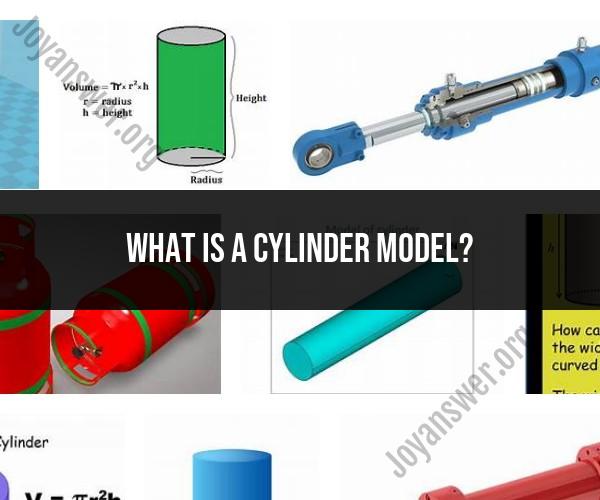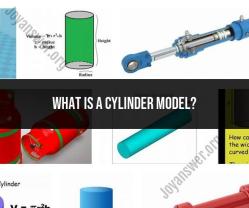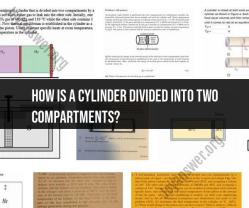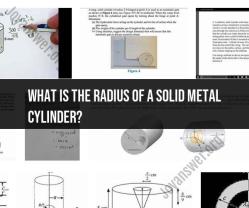What is a cylinder model?
The cylinder is a three-dimensional geometric shape that plays a significant role in mathematics and has various real-world applications. Let's explore the cylinder model and its key properties:
1. Definition of a Cylinder
A cylinder is a solid geometric figure with two parallel circular bases connected by a curved surface. The bases are congruent and lie in parallel planes. The height of the cylinder is the perpendicular distance between the two bases.
2. Formula for Volume
The volume of a cylinder can be calculated using the formula:
Volume = π × (radius)^2 × height
3. Formula for Surface Area
The surface area of a cylinder can be calculated using the formula:
Surface Area = 2π × radius × (radius + height)
4. Types of Cylinders
There are two main types of cylinders:
- Right Circular Cylinder: The axis joining the centers of the two circular bases is perpendicular to the bases.
- Oblique Cylinder: The axis is not perpendicular to the bases.
5. Real-World Applications
The cylinder model is used in various real-world scenarios:
- Containers: Cylinders are often used as containers for liquids and gases, such as soda cans and propane tanks.
- Engineering: Cylinders are used in designing engines, pipes, and hydraulic systems.
- Architecture: Columns in buildings and bridges can have a cylindrical shape.
- Manufacturing: Cylindrical objects are commonly manufactured using lathes and other machinery.
6. Visualization and Manipulation
Visualizing and manipulating the cylinder model can help in understanding its properties and relationships. Interactive tools and software can aid in exploring cylinders from different angles and dimensions.
Conclusion
The cylinder model is a fundamental concept in geometry and has practical applications in various fields. Understanding its properties and formulas can contribute to solving mathematical problems and designing real-world structures.




